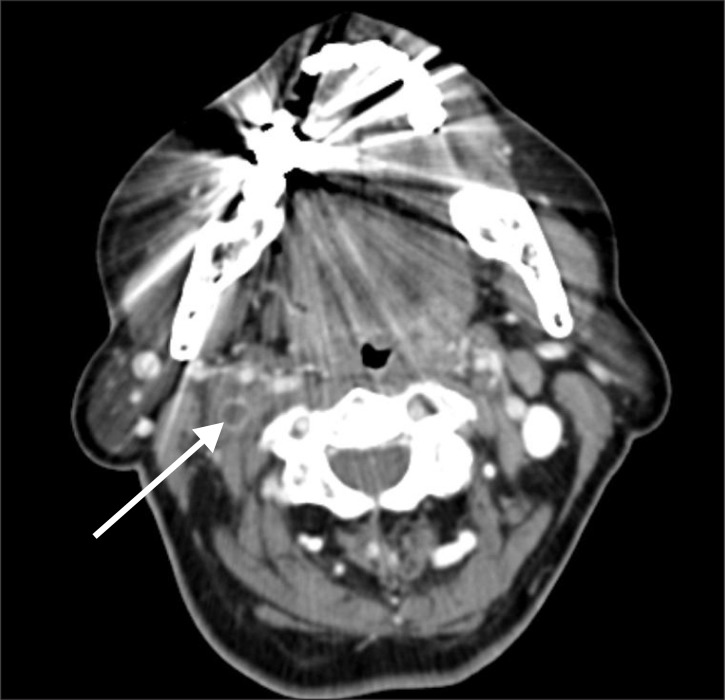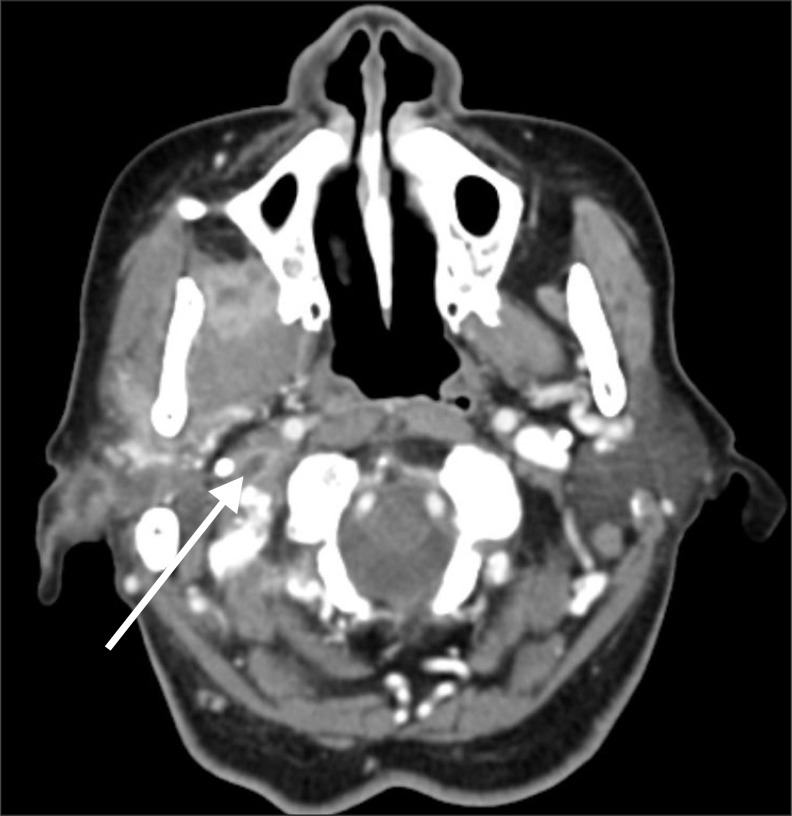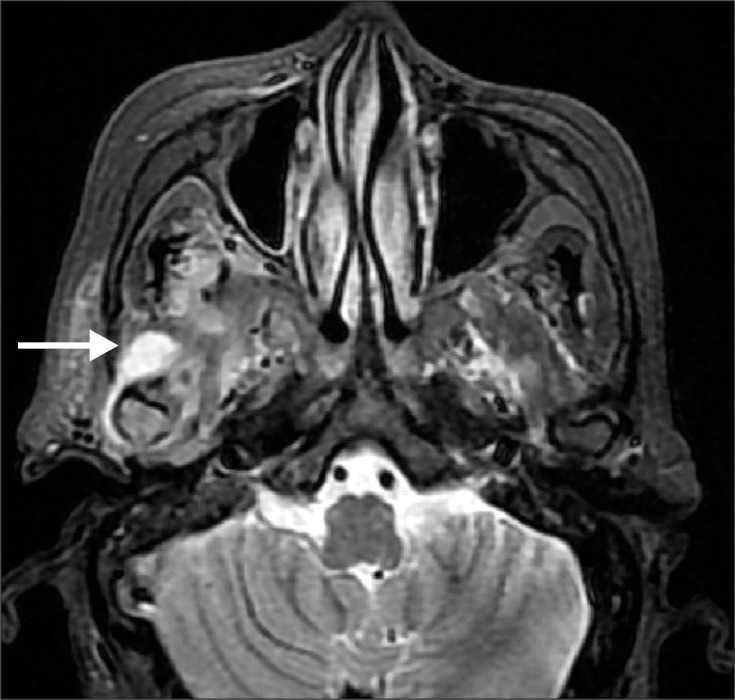J Korean Assoc Oral Maxillofac Surg.
2013 Apr;39(2):85-89. 10.5125/jkaoms.2013.39.2.85.
Lemierre syndrome with thrombosis of sigmoid sinus following dental extraction: a case report
- Affiliations
-
- 1Department of Oral and Maxillofacial Surgery, Dental Research Institute, School of Dentistry, Seoul National University, Seoul, Korea. jinychoi@snu.ac.kr
- KMID: 1430499
- DOI: http://doi.org/10.5125/jkaoms.2013.39.2.85
Abstract
- Lemierre syndrome is caused by an infection in the oropharyngeal region with subsequent thrombophlebitis in the internal jugular vein. The thrombus from the thrombophlebitis can invade other vital organs, such as liver, lungs, or joints, resulting in secondary infection, which further exacerbates the fatal prognosis of this syndrome. Lemierre syndrome, also called postanginal sepsis or necrobacillosis, was first reported by Dr. Lemierre in 1936. In his report, Lemierre mentioned that out of 20 patients who suffered from this syndrome, only two survived. He also stated that all of the 20 patients complained of infections in the palatine tonsils and developed sepsis and thrombophlebitis in the internal jugular vein. Once called a "forgotten disease," this syndrome showed a very high mortality rate until usage of antibiotics became prevalent. In this case report, the authors present a 71-year-old female patient who suffered from Lemierre syndrome with thrombosis extended to the right sigmoid sinus.
MeSH Terms
Figure
Reference
-
1. Lemierre A. On certain septicemia due to anerobic organisms. Lancet. 1936; 227:701–703.2. Styrt B, Gorbach SL. Recent developments in the understanding of the pathogenesis and treatment of anaerobic infections (2). N Engl J Med. 1989; 321:298–302. PMID: 2664518.3. Chirinos JA, Lichtstein DM, Garcia J, Tamariz LJ. The evolution of Lemierre syndrome: report of 2 cases and review of the literature. Medicine (Baltimore). 2002; 81:458–465. PMID: 12441902.4. Dool H, Soetekouw R, van Zanten M, Grooters E. Lemierre's syndrome: three cases and a review. Eur Arch Otorhinolaryngol. 2005; 262:651–654. PMID: 15599753.
Article5. Lai YJ, Lirng JF, Chang FC, Luo CB, Teng MM, Chang CY. Computed tomographic findings in Lemierre syndrome. J Chin Med Assoc. 2004; 67:419–421. PMID: 15553803.6. Duong M, Wenger J. Lemierre syndrome. Pediatr Emerg Care. 2005; 21:589–593. PMID: 16160663.
Article7. Shettry V, Lodha A, Haran M, Ghitan M, Vaynblat M. Lemierre syndrome with contralateral thrombosis of the internal jugular vein. Infect Dis Clic Prac. 2009; 17:266–267.8. Baig MA, Rasheed J, Subkowitz D, Vieira J. A review of lemierre syndrome. Internet J Infec Dis. 2006; 5:2.
Article9. Kadhiravan T, Piramanayagam P, Banga A, Gupta R, Sharma SK. Lemierre's syndrome due to community-acquired meticillin-resistant Staphylococcus aureus infection and presenting with orbital cellulitis: a case report. J Med Case Rep. 2008; 2:374. PMID: 19063718.
Article10. Stam J. Thrombosis of the cerebral veins and sinuses. N Engl J Med. 2005; 352:1791–1798. PMID: 15858188.
Article11. Brook I. Microbiology and management of deep facial infections and Lemierre syndrome. ORL J Otorhinolaryngol Relat Spec. 2003; 65:117–120. PMID: 12824734.
Article12. Hoehn KS. Lemierre's syndrome: the controversy of anticoagulation. Pediatrics. 2005; 115:1415–1416. PMID: 15867055.
Article13. Seo YT, Kim MJ, Kim JH, Ha BW, Choi HS, Kim YT, et al. Lemierre syndrome: a case of postanginal sepsis. Korean J Intern Med. 2007; 22:211–214. PMID: 17939341.
Article14. Edibam C, Gharbi R, Weekes JW. Septic jugular thrombophlebitis and pulmonary embolism: a case report. Crit Care Resusc. 2000; 2:38–41. PMID: 16597283.15. Cook RJ, Ashton RW, Aughenbaugh GL, Ryu JH. Septic pulmonary embolism: presenting features and clinical course of 14 patients. Chest. 2005; 128:162–166. PMID: 16002930.16. Bentham JR, Pollard AJ, Milford CA, Anslow P, Pike MG. Cerebral infarct and meningitis secondary to Lemierre's syndrome. Pediatr Neurol. 2004; 30:281–283. PMID: 15087108.
Article




